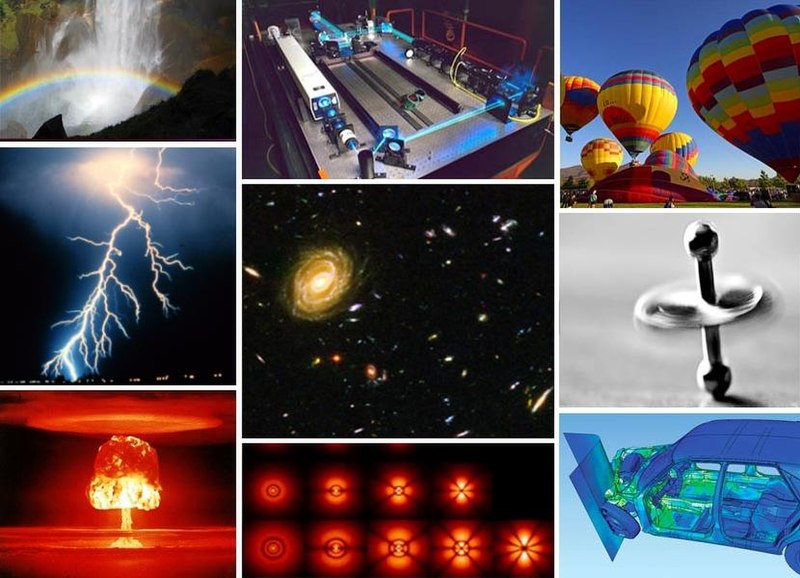
Physics, often considered the most fundamental of the sciences, seeks to understand how the universe behaves. From the motion of galaxies to the microscopic vibrations of atoms, physics describes the principles that govern reality. Yet for many students, physics can seem abstract, mathematical, and disconnected from their everyday experiences. A powerful way to bridge this gap is by using real-life applications to teach and learn physics. By grounding abstract concepts in the real world, students can gain a deeper appreciation for the subject, improve retention, and develop critical thinking skills that extend beyond the classroom.
The Challenge of Abstract Learning in Physics
Traditional physics instruction often relies heavily on mathematical formulas, theoretical models, and idealized scenarios like frictionless planes or point masses. While these simplifications are useful for introducing basic concepts, they can also create a sense of detachment from the tangible world. Students may struggle to see how Newton's laws or thermodynamic principles apply to their lives, which can lead to disengagement or even a belief that physics is only for engineers and scientists.
One way to overcome this is to contextualize physics learning through real-life examples, allowing students to see the subject not just as an academic requirement, but as a tool for understanding and interacting with the world.
The Benefits of Real-Life Applications in Physics Education
- Improved Engagement and Motivation: Recognizing physics principles in familiar contexts makes learning more relatable and inspiring.
- Enhanced Conceptual Understanding: Applying concepts to real scenarios deepens comprehension.
- Critical Thinking and Problem Solving: Real-world problems cultivate flexible, analytical thinking.
- Preparation for Future Careers: Many professions require the application of physics in practical settings.
Everyday Examples That Teach Physics Concepts
1. Automobiles and Newton's Laws
Driving illustrates all three of Newton's laws:
- First Law (Inertia): A car continues moving unless acted upon by brakes or friction.
- Second Law (F = ma): A car's acceleration depends on its mass and the applied force.
- Third Law (Action-Reaction): Tires push against the road; the road pushes back, propelling the car forward.
2. Sports and Kinematics
Sports provide dynamic examples of motion, force, and energy. A basketball shot demonstrates projectile motion. A soccer kick shows how torque and angular momentum affect direction. This can lead to questions like:
- Why do sprinters lean forward?
- How do helmets protect athletes from forceful impacts?
- What angle gives the longest range in a long jump?
3. Home Appliances and Electromagnetism
- Microwave ovens: Use electromagnetic waves to heat water molecules.
- Refrigerators: Demonstrate thermodynamic cycles.
- Induction cooktops: Use changing magnetic fields to heat cookware.
4. Weather and Thermodynamics
Weather phenomena illustrate thermodynamics and fluid dynamics:
- Clouds: Form via condensation and pressure changes.
- Winds: Arise from pressure gradients and the Coriolis effect.
- Storms: Involve massive energy transfers and electrostatic discharge (lightning).
5. Music and Wave Physics
Sound and music help explain wave behavior:
- Instruments: Demonstrate standing waves and resonance.
- Voice: Analyzed through frequency, amplitude, and timbre.
- Acoustics: Involve sound reflection, interference, and absorption.
6. Roller Coasters and Energy Conservation
Amusement parks offer thrilling lessons on energy and motion:
- Gravitational potential: Converts into kinetic energy during descents.
- Circular motion: Explains loops and curves using centripetal force.
- Friction and resistance: Modify ideal energy conservation scenarios.
Integrating Real-Life Applications into the Curriculum
Project-Based Learning (PBL)
Students build projects like solar ovens or earthquake-resistant structures to apply physics creatively and practically.
Inquiry-Based Labs
Encouraging students to investigate their own questions enhances ownership and understanding. Example: testing angles for water balloon trajectories.
Video Analysis Tools
Apps like Tracker allow students to analyze real motion frame by frame, bringing equations to life.
Guest Speakers and Field Trips
Connecting with professionals or visiting science centers contextualizes physics in careers and innovations.
Flipped Classrooms and Simulations
Using online resources and simulations enables more hands-on, collaborative class time.
Addressing Potential Challenges
- Curriculum Constraints: Use brief real-world examples when full projects aren't possible.
- Resource Limitations: Substitute household items and free apps for expensive lab gear.
- Student Diversity: Include varied examples to appeal to different interests and backgrounds.
Case Studies and Research Support
Studies show that real-life physics improves understanding and retention:
- Students using real-world contexts perform better on problem-solving tasks.
- Programs like ISLE and Modeling Instruction increase engagement and comprehension.
- The University of Colorado's Learning Assistant Program improves retention and equity.
The Role of Teachers and Educators
Teachers are essential in making physics engaging and relevant. Their creativity, examples, and passion can transform how students view the subject and the world.
Conclusion
Physics is not confined to textbooks or labs - it is woven into the fabric of daily life. By using real-life applications in physics education, we can make the subject more accessible, relevant, and engaging. Students who see physics in their everyday experiences are more likely to appreciate its beauty and utility and develop a scientific mindset that lasts a lifetime.
You can learn these concepts and more at Dr Hock's maths and physics tuition.